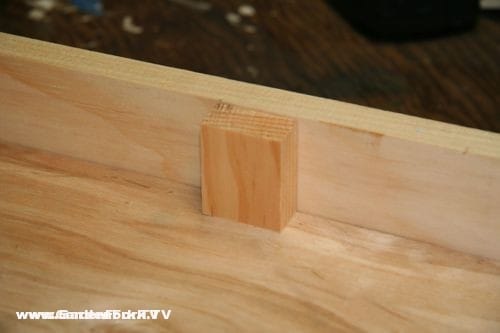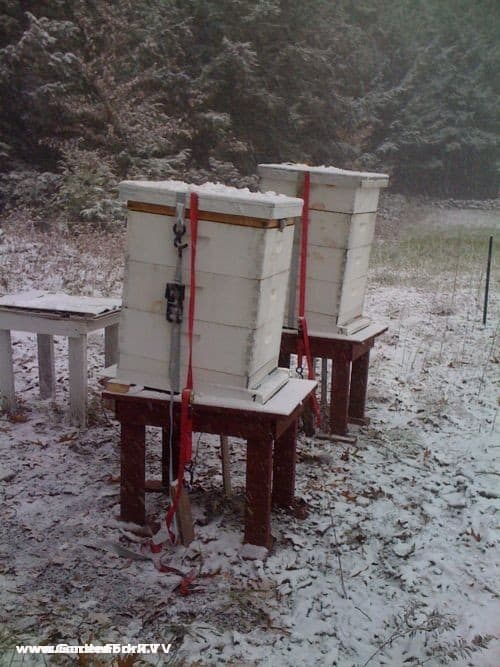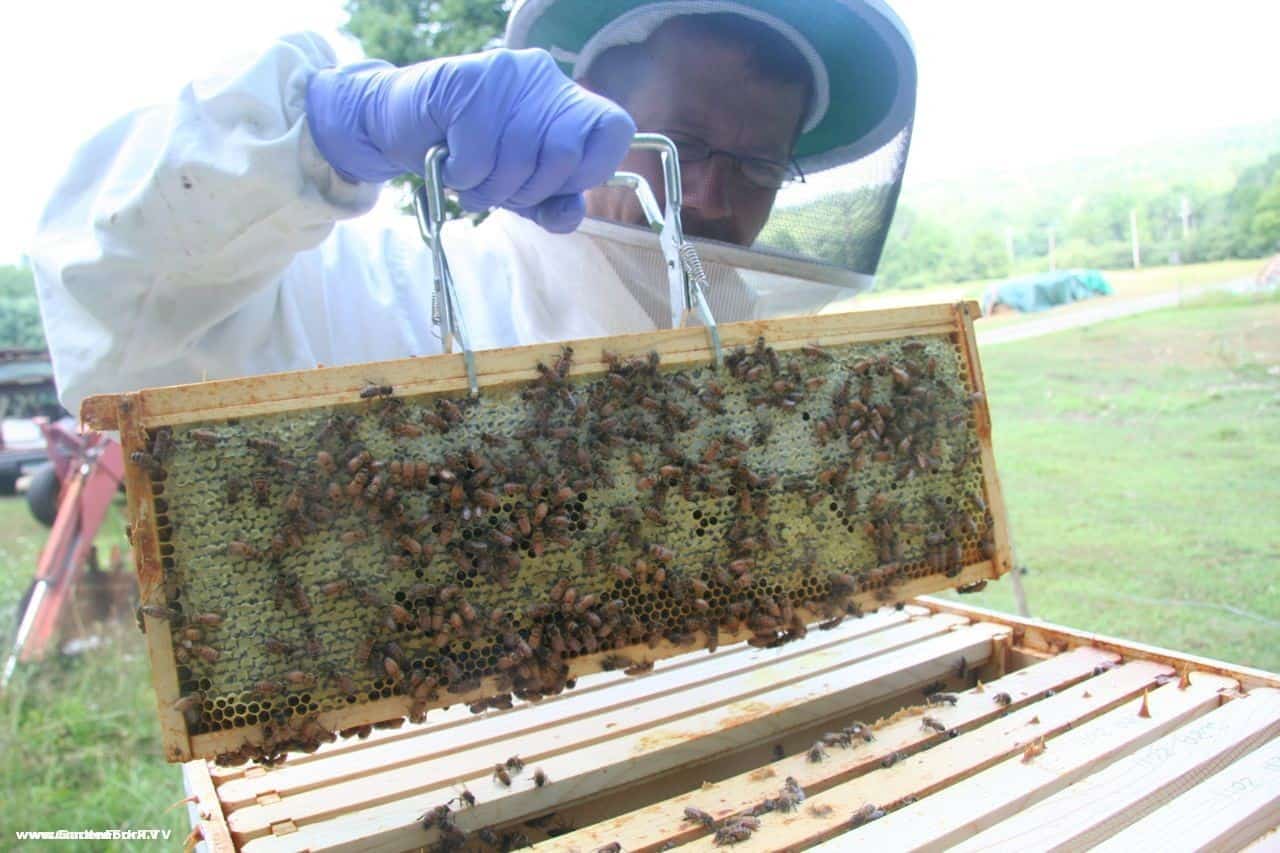Matt joins Eric to answer Beekeeping for Beginners questions on this show. What equipment to buy, how to buy honeybees, where to put beehives in your yard, what kind of beekeeping suit to buy all answered here.
what kind of beekeeping suit and beekeeping veil is good?
what kind of frames should i use in the beehive, are plastic frames better than wood frames?
wax foundation versus plastic foundation should i use plastic or wax foundation on the frames of the beehive? eric talks about the benefits of wax foundation and plastic foundation and frames
Eric suggests 2 beekeeping for beginners books,

Buy On IndieBound Here
Click Here to buy on Amazon

Click Here to Buy On Indiebound
Click Here To Buy On Amazon
Beekeeping for Dummies and the Backyard Beekeeper
do you paint the outside of the beehive? yes, we use latex paint.
should i buy 8 frame supers or 10 frame supers? matt and eric talk about the benefits of 8 frame boxes and 10 frame boxes
what kind of beekeeping tools should i buy? eric suggests bringing duct tape, scissors, entrance reducer, smoker, woodchips, matches, 2 or 3 hive tools, a frame grabbing tool, needle nose pliers and more.
what kind of hive stand should my beehive rest on? cinder block, wood, metal stands are talked about, eric suggests having a work table next to your hives.
we talk about benefits of top bar hives vs. langstroth hives, and the drawbacks of top bar hives and langstroth beehives.
should you buy a bee package or a honeybee nuc? eric talks about the advantages of honeybee packages , the pros and cons of bee packages, and the benefits of being a nuc or nucleus hive to start a beehive.
eric advocates buying local honeybees and queens, either packages or nucs, the closer you can buy your bees the better.
www.whiteoakapiary.com in Brewster, NY and www.warmcolorsapiary.com in Greenfield, MA is where eric buys queens and honeybees.
should you feed honeybees in winter and how do i feed my bees over the winter? eric talks about how to feed bees in winter. you can watch our Beekeeping for Beginners video series here, and several videos are about feeding bees in winter.
Eric uses a hand immersion blender to mix this sugar feed solution, and adds this homemade essential oil recipe for bees to the sugar
The essential oil mixture is great for spraying the bees to combat nosema and bee diarrhea.
winterizing beehives is discussed, here is eric’s beehive insulated inner cover video, Eric feeds sugar cakes to the bees in winter, not fondant or sugar syrup. Should you close or open a screened bottom board? Matt and Eric discuss
Mudsongs.org is a favorite beekeeping blog of eric’s. Phillip documents his beekeeping in Newfoundland Canada.
where to site your hives in your yard, where should you put the hives, what is the best location for beehives? eric has learned that full sun is best, he talks more about it during this radio episode.
should I take a beekeeping class? eric says yes.
and join your local beekeeping group. search on the web for your state’s beekeeping association, and that site should list local beekeeping groups.
Megan of BrooklynHomesteader.com offers online beekeeping classes, and in-person classes as well.














































 The idea for this honeybee beekeeping show started when my friend & GF viewer Matt wanted to ask me some questions about starting beekeeping. I suggested we make it into a GardenFork Radio show, as I imagine there are a bunch of people out there with questions about the basic setup needed to start raising bees. We answer questions about the following
The idea for this honeybee beekeeping show started when my friend & GF viewer Matt wanted to ask me some questions about starting beekeeping. I suggested we make it into a GardenFork Radio show, as I imagine there are a bunch of people out there with questions about the basic setup needed to start raising bees. We answer questions about the following









 I wear
I wear 





